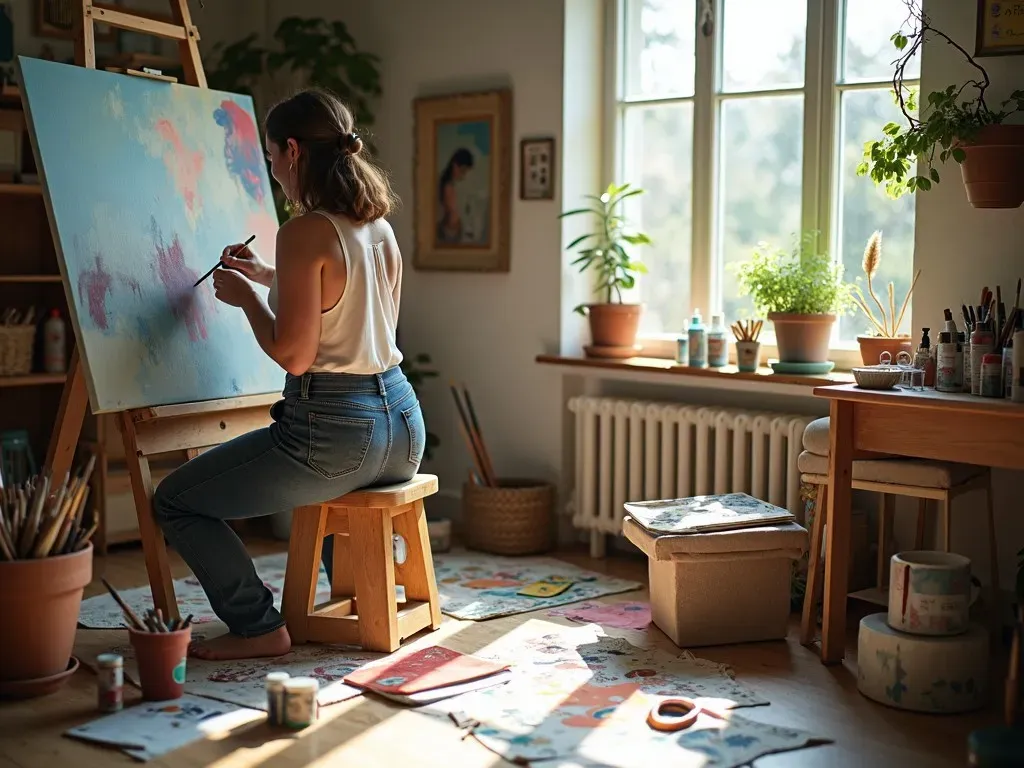art supplies for canvas painting are fundamental tools and materials that artists of all levels need to create stunning artwork. Whether you’re a beginner starting your first canvas or a professional artist working on your next masterpiece, having the right Supplies is crucial to achieving the desired results.
The Essential Supplies
1. Canvas Options
Choosing the right canvas is the first step in canvas painting, and it can significantly influence your artwork’s overall appearance. There are several types of canvases available:
| Canvas Type | Description |
|---|---|
| Stretched Canvas | Pre-stretched over a wooden frame, ready to paint. Ideal for oils and acrylics. |
| Canvas Panels | Flat boards covered with canvas, easier to transport. Suitable for smaller works. |
| Canvas Rolls | Unlimited size and shape possibilities, great for larger works. Cut to your dimensions. |
| Wood Panels | Solid support for mixed media, high absorbency. |
2. Paints
The type of paint you use can profoundly affect your technique and the final look of your piece. Common types include:
- Acrylics: Quick-drying and versatile; can mimic other media.
- Oil Paints: Slow drying, allowing for blending and layering. Great for detailed work.
- Watercolors: Transparent and fluid; ideal for soft color washes.
| Paint Type | Features |
|---|---|
| Acrylic | Fast-drying, flexible, water-based |
| Oil | Slow drying, rich color, blendable |
| Watercolor | Transparent, fluid, ideal for layering |
3. Brushes
Brush selection is key for achieving different effects. Different shapes and sizes can help create various textures and strokes:
| Brush Type | Best Use |
|---|---|
| Round | Detail work, fine lines |
| Flat | Bold strokes, washes |
| Filbert | Blending edges, soft strokes |
| Fan | Texture effects, foliage |
4. Additional Tools
In addition to the primary supplies, consider these items to enhance your painting experience:
- Palettes: For mixing colors.
- Easels: To hold your canvas securely while you paint.
- Varnishes: To protect finished artwork from dust and UV damage.
- Rags and Paper Towels: For cleaning brushes and wiping excess paint.
5. Gesso
An essential step before starting to paint, applying gesso prepares your canvas. It creates a suitable surface for paint adhesion and helps to prevent the paint from soaking into the fibers.
6. Sealants and Varnishes
Once your artwork is complete, applying a sealant or varnish not only protects your creation but also enhances its vibrancy and texture.
Popular Brands and Where to Buy
Several trusted brands provide quality materials for canvas painting:
- Blick Art Materials: A go-to for a broad selection of art supplies, including canvases and paints.
- Jerry’s Artarama: Great for discounts and a wide range of professional materials.
- Michaels: Ideal for finding beginner-friendly kits and supplies locally.
- Amazon: A convenient option for a vast selection delivered to your door.
Tips for Finding Local Art Supplies
When searching for art supplies for canvas painting locally, consider these strategies:
- Explore Local Art Stores: Many cities have local art supply stores that offer a range of products and can provide expert advice.
- Attend Art Workshops: Community centers often provide information on where to buy quality supplies and may even have partnerships with local stores.
- Search Online Directories: Websites like Yelp and Google Maps can help locate nearby art supplies stores by searching "art supplies near me."
Frequently Asked Questions (FAQ)
Q1: What is the best type of canvas for beginners?
Answer: Stretched canvases or canvas panels are recommended for beginners as they are readily available and easy to work with.
Q2: Is gesso necessary before painting?
Answer: Yes, gesso prepares the canvas surface, ensuring better paint adhesion and durability.
Q3: Can I use acrylic paints on an oil-based surface?
Answer: It’s not advisable; oil paints shouldn’t be used on acrylic surfaces, but acrylics can be used on oil surfaces if allowed to dry properly.
Q4: How do I clean my brushes properly after painting?
Answer: Clean your brushes with water and mild soap for acrylics, and use solvents like turpentine or mineral spirits for oil paints.
Q5: Where can I find inexpensive art supplies?
Answer: Check local thrift stores, dollar stores, or online marketplaces like Amazon for budget-friendly supplies.
By utilizing the right art supplies for canvas painting, you can unlock your creative potential and bring your artistic vision to life. Having the best materials ensures that your artwork stands the test of time, both in terms of quality and expression.
